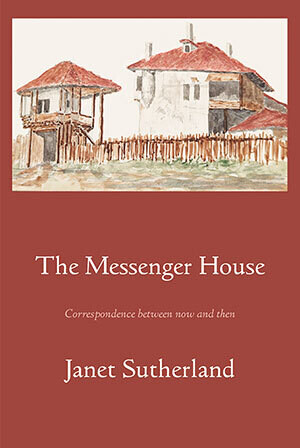The Messenger House
Janet Sutherland
(Shearsman Books, 2023); pbk: £16.95
Janet Sutherland is a British poet and a co-founder of the Needlewriters cooperative. In this her fifth collection from Shearsman Books, The Messenger House, she aims to better understand societies on local and global levels, and `why things happened as they did`. This book was created based on collected letters and journals, and partially autobiographical stories of the author.
There are three main stories in the book: from 1846 to 1847 in journals written by George Sydney Davies (Sutherland`s great-great-grandfather, a solicitor); the author`s trip to Serbia in 2018 and her own personal journals, and the three years from 2020 to 2022, when Sutherland went to London, following her illness and treatment.
Two main characters of the book, excluding Janet, are Gutch and George. John Wheely Gough Gutch was a scientist and the Queen`s Messenger for the Foreign Office, and her great-great-grandfather on her grandmother’s side of the family. He was a solicitor, but for some unknown reason, he joined Gutch on his trip, becoming his friend and unofficial German translator.
Sutherland gives the reader an in-depth depiction of the political and social context between then (the 1800s) and now (2020), including such problems as inequality, sexism, poor education, slavery, and bad medicine in the past. ‘Discrimination, oppression, objectivization, stereotyping, cultural imperialism, and patriarchy’ are issues explored from the information present in the journals.
George’s journals highlight the importance of the class system in the 19th century, as well as the occurrence of racism and xenophobia, and George was no exception in this respect. Such phrases as the ‘incompetence of the workman’, or the description of Jews as ‘very dirty and poverty stricken’ only support it. It is no wonder then as Janet discloses by the end of the book that George`s family used to profit from the slavery in sugar estates in the West Indies. Gutch’s and George’s middle-class attitudes can be easily followed by many descriptions of their leisure time pursuits, consisting mainly of shooting, smoking pipes, and drinking.
At the same time as the unfolding of George’s letters, we read Sutherland’s personal story of two of her trips, her feelings, and the hardships she overcame. That’s why this book’s subtitle is ‘between then and now’ as the author follows the steps of her great-great-grandfather.
The poetry seasons the text very well, mirroring the events described in prose and implemented between the lines in completely unexpected places. The language of the letters is quite interesting as well, as there is not only a mix of German, English, and Serbian, but a formal old-fashionedness, reflected in the use of words such as ‘endeavours’, ‘culpability’, ‘hacen’, and others.
There were also moments when the author paid special attention to people of outwith heterosexual sexual orientations in the journals from her trip in 2018, perhaps to show the differences between then and now, or to simply specify what ‘it`s like to be a gay in Hungary’.
We are lucky that the letters were uncensored, and quite straightforward, and through which we can experience the differences in morality, traditions, and accepted social norms of the past centuries and now. There are many descriptions of the local customs and landscapes, as an addition to the whole picture.
Details such as the names of the streets, hotels, trains, prices for food, clothing, and others also help to build a better portrait of the different worlds. Yet if the reader is not careful, the effect might be sometimes overwhelming, and one could very well be lost in the flow of the information and different events happening at the same time. This book would be a perfect pick for historians, as there are many historical events mentioned in this book, for instance, the NATO bombing of Belgrade, the World War II period, the Holocaust, the oppression of Jews, and other key moments of history.
Sofiia Yevmenkina


Leave a Reply